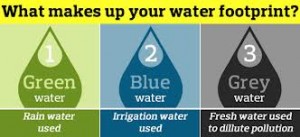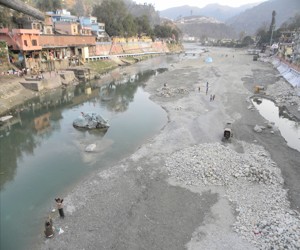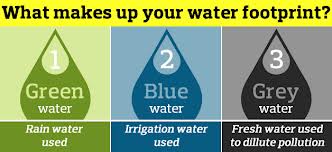To the average consumer, being “environment conscious” or “eco-friendly” may seem a fairly simple concept to understand. Being “eco-friendly” at the individual or household level can range from judicious use of resources like water and electricity and recycling waste, to a reduced use of environmentally harmful material like plastic bags in day-to-day activities. If one were to spread awareness of this sort, one may come up with simple ideas like turning off electric appliances and taps when not needed, using kitchen waste as compost, and switching to cloth or paper bags. If one were to go a step further and explore the complex connections that tie individual and the global ecosystem as a whole, there would be no dearth of information that shed light on these complex and intricate connections.
When one thinks about how one’s own decisions regarding buying a product or using a mode of transport, one can see that all these decisions are a part of a whole system of networks that comprise of production, supply and distribution of the products that we use every day. In this era of increased global connectivity, even the most ordinary products pass through a wide geographical network of production and distribution. For example, a packet of table salt makes its way from a salt mine, where it is produced by pumping water into the earth to dislodge salt deposits to extract salt, and then this goes to a factory where it is be iodized and packeted. Then it passes through the chains of wholesale and retail through which it finally reaches the kitchen. If the total amount of resources involved in this entire process has to be calculated, then it would obviously not be restricted to the contents of the packet alone. Raw materials, equipment, storage and transport would all figure into this calculation. Electricity, fuel and water would be the indirectly consumed in this manner, and are associated with what is known as the “footprint” of an individual, household, locality or country due to consumption. This footprint represents the impact of resource use on the environment.

So a “carbon footprint” or “water footprint” are measures of the total use of carbon in the form of the emission of greenhouse gases “that are relevant to climate change and associated with human production or consumption activities”[1], and the “total water used in the production of the goods and services that a particular individual, business or nation uses”[2] respectively. The water footprint of a particular product comprises the measurement of water drawn from various kinds of sources like lakes, rivers (known as blue water), rainfall (green water) and water polluted due to various reasons like industry, agriculture etc.) The water usage calculated this way consists of the indirect use of water by the consumer who purchases the product, and the direct use of water by the organization that produces it There are means to calculate the water footprint of an individual person by looking at their income, country and lifestyle (dietary choices, consumption patterns and so on). Dietary choices contribute to variations in water footprints because of the specific kinds of production. For example, meat production involves greater water usage per ton than agricultural crops which are directly consumed. Water footprints also vary in impact according to the level of water scarcity in the region from which water is sourced.

The water footprint becomes an important measure because of the changing water cycle, and the growing freshwater needs of the burgeoning world population. Changing water cycles have led to uneven distribution of water across regions, and this is accompanied by greater water usage and pollution. The water resources affect not only human beings, but the entire ecosystem. Water scarcity affects wildlife and vegetation as well, and has important implications for food security. Rivers are gradually running dry due to climate change and excessive consumption of water for agriculture, industry and domestic use. Examples of such rivers are the Ganga in Northern India, the Godavari River in Andhra Pradesh, and other rivers such as the Brahmaputra. The situation is predicted to become worse in the future, as freshwater needs are only increasing. Freshwater is limited, and water footprint gives an effective account of water consumption at several levels. Such knowledge is crucial to water conservation, and the mitigation of water pollution, as water footprints of various goods and services help to identify sources of pollutants. Having a water accounting system enables decision makers at all levels (individual, household, organizational, national, etc.) to have a clearer idea of the impact of their water consumption.

As a consumer, one can take initiatives to gain knowledge about one’s own water footprint in order to conserve water in whatever way possible. Direct water usage can be minimized by simple measures like turning off taps when not needed, and using water-saving appliances. Water pollution in the household can also be minimized by the safe disposal of harmful liquid waste like paint and other chemicals. The direct consumption of water is always easier to calculate and regulate, but the indirect consumption is far more complex. Indirect water consumption is tied to what kinds of products one buys, and switching to a low-water consuming lifestyle will not be easy without knowledge about the water footprints of each product that one consumes. Consumer awareness can be spread about the footprints of different products, so that people can make informed decisions and substitute products with high water footprints with those with low water footprints. The average individual has some control over indirect water consumption in that he or she can choose which products to use. However, changing one’s lifestyle or consumption patterns drastically may not always be possible. But as environment conscious consumers, people have the duty to conserve resources and the opportunity and power to bring change in their own way.
[1] Wiedmann, T. and Minx, J. (2008). ‘A Definition of ‘Carbon Footprint’. In: C. C. Pertsova, Ecological
Economics Research Trends: Chapter 1, pp. 1-11, Nova Science Publishers, Hauppauge NY, USA.
https://www.novapublishers.com/catalog/product_info.php?products_id=5999
[2] “Water footprint- How People Use Freshwater”, World Wildlife Fund [http://www.wwf.org.au/our_work/people_and_the_environment/human_footprint/water_footprint/]

Leave a Reply